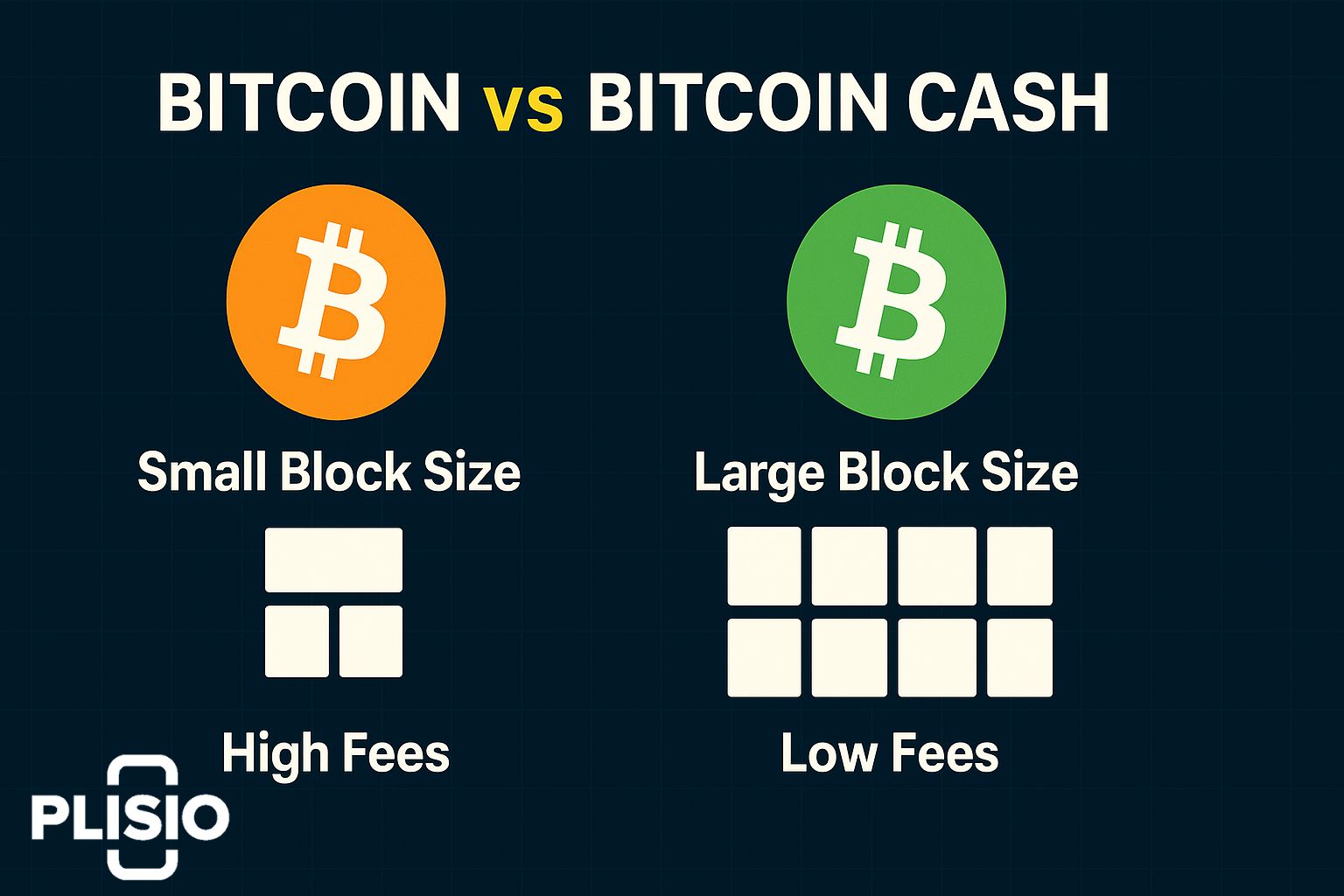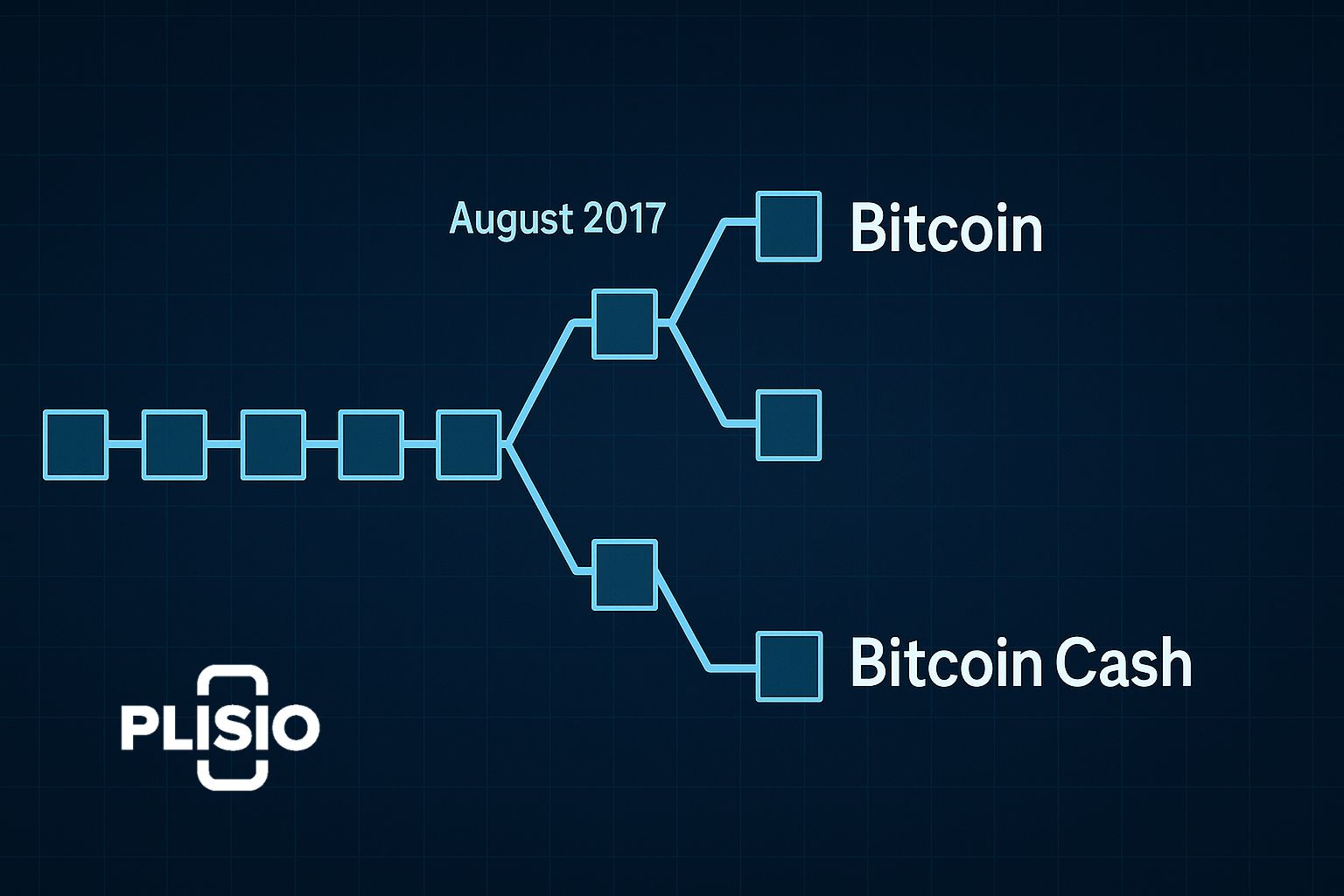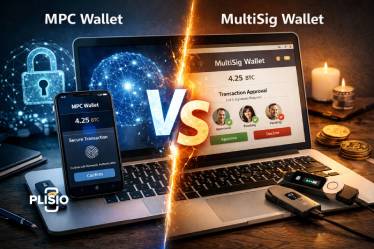Bitcoin vs. Bitcoin Cash: Understanding the Key Differences

Since its inception, Bitcoin has revolutionized the world of digital finance. However, disagreements within its community led to a major split in August 2017, resulting in the creation of Bitcoin Cash. This hard fork of Bitcoin sparked an ongoing debate: Bitcoin vs. Bitcoin Cash. What’s the difference between the two, and which better fulfills the vision of a peer-to-peer electronic cash system?
Bitcoin and Bitcoin Cash: A Brief History
Bitcoin was created by Satoshi Nakamoto in 2009 as an alternative digital asset and electronic cash system. It was designed to have a fixed supply of 21 million BTC and to be decentralized, relying on blockchain technology. Over time, as adoption increased, the Bitcoin network became congested, and transaction fees surged, causing delays in everyday transactions.
To address these issues, a group of bitcoin supporters proposed increasing the block size limit. Their solution led to the Bitcoin Cash hard fork on 1 August 2017. Bitcoin Cash was created to enable faster transactions at lower fees by implementing an increased block size. Initially, BCH had an 8 MB block size compared to Bitcoin’s 1 MB. It was later increased to 32 MB. This larger block size was a defining change in the bitcoin cash vs bitcoin debate.
Bitcoin Cash also introduced a new blockchain with improved parameters for more efficient use. By focusing on usability, Bitcoin Cash aimed to fulfill Bitcoin's original vision of an everyday payment system.
Bitcoin vs Bitcoin Cash: Technical Comparison
The main difference between Bitcoin and Bitcoin Cash lies in their block size. Bitcoin maintains a 1 MB block size, relying on second-layer solutions like the Lightning Network to scale. Bitcoin Cash, on the other hand, uses a larger block size to allow more transactions per block.
This directly impacts the transaction fee and speed. Bitcoin Cash offers lower transaction fees and quicker confirmations, making it more suitable for cash transactions and everyday use. Bitcoin is widely seen as a store of value, often referred to as "digital gold."
The Bitcoin Cash blockchain also incorporates:
- Emergency Difficulty Adjustment (EDA)
- A more frequent mining difficulty update algorithm
These features make mining more adaptable and consistent, especially during volatility in mining power.

Community and Adoption: BTC vs BCH
Bitcoin (BTC):
- Larger user base
- Higher liquidity
- Widespread exchange support
- Viewed as the original Bitcoin
Bitcoin Cash (BCH):
- Focuses on usability
- Lower fees and faster transactions
- Advocated by figures like Roger Ver
- Created to support bitcoin as an everyday digital cash system
The Bitcoin community values decentralization and innovation through layers like Lightning. The Bitcoin Cash community emphasizes on-chain scaling and staying close to Satoshi Nakamoto’s white paper.
Comparison Table: Bitcoin vs. Bitcoin Cash
|
Feature |
Bitcoin (BTC) |
Bitcoin Cash (BCH) |
|
Block Size |
1 MB |
Up to 32 MB |
|
Average Transaction Fee |
Higher |
Lower |
|
Confirmations per Second |
Fewer |
More |
|
Main Use Case |
Store of Value |
Peer-to-peer Payments |
|
Mining Difficulty |
Higher |
More Adaptive |
|
Lightning Network Support |
Yes |
No |
Blockchain Technology and Development Paths
Both BTC and BCH use blockchain technology, but their development directions differ. Bitcoin prefers conservative updates, prioritizing decentralization and security. Bitcoin Cash has seen multiple changes, including:
- A split into Bitcoin SV and Bitcoin ABC
- Focus on practical applications
- Experimental upgrades to improve throughput
Bitcoin ABC became the main version of Bitcoin Cash after the hard fork in November. The cryptocurrency world saw another fork as Bitcoin SV emerged, pushing for even larger blocks.
Practical Use: What's the Difference?
Choosing between Bitcoin or Bitcoin Cash depends on usage. Here's a breakdown:
Use Bitcoin if you:
- Want a long-term investment.
- Seek high liquidity and exchange support.
- Prefer a conservative approach to innovation.
Use Bitcoin Cash if you:
- Need fast, everyday transactions.
- Prefer lower transaction fees.
- Value usability and low latency.
Many bitcoin users see BTC as a store of value, while BCH is preferred for practical utility.
Bitcoin Mining and Transaction Capabilities
Bitcoin mining is highly competitive, requiring specialized hardware and significant mining power. This contributes to:
- Greater security
- Higher mining difficulty
Bitcoin miners must solve increasingly complex puzzles, making the bitcoin network extremely secure. In contrast, BCH miners face less competition, leading to easier block production and a reduced time difference between blocks.
Bitcoin Cash's Advantages Include:
- Lower congestion
- Increased block size
- Lower fees during network spikes
BCH also supports up to more transactions per second compared to BTC, making it a better candidate for real-time cash payments.

The Future of Bitcoin and Bitcoin Cash
The future of Bitcoin and Bitcoin Cash depends on community support, developer innovation, and user adoption. Bitcoin remains a market leader in the crypto market and represents stability.
Bitcoin Cash, while not as dominant, continues to evolve as a solution for the electronic cash system dream. Its larger block size and commitment to usability make it attractive for micro-payments and retail use cases.
Final Thoughts: Bitcoin Cash vs Bitcoin
In summary, the difference between Bitcoin and Bitcoin Cash lies in their goals and technical choices. The original Bitcoin blockchain champions decentralization and scarcity, with a fixed 21 million BTC. Bitcoin Cash emphasizes practical use, with faster transactions, lower fees, and the same 21 million BCH cap.
Key Takeaways:
- Bitcoin is ideal for value storage and long-term holding.
- Bitcoin Cash is built for fast and cheap everyday payments.
- The choice of BTC vs BCH depends on personal and business needs.
Whether you support Bitcoin or Bitcoin Cash, both play a critical role in shaping the future of cryptocurrency. While Bitcoin was created to disrupt traditional finance, Bitcoin Cash was created to restore the original vision of peer-to-peer digital cash.
As blockchain technology matures, both networks continue to offer valuable lessons in scalability, governance, and adoption.




